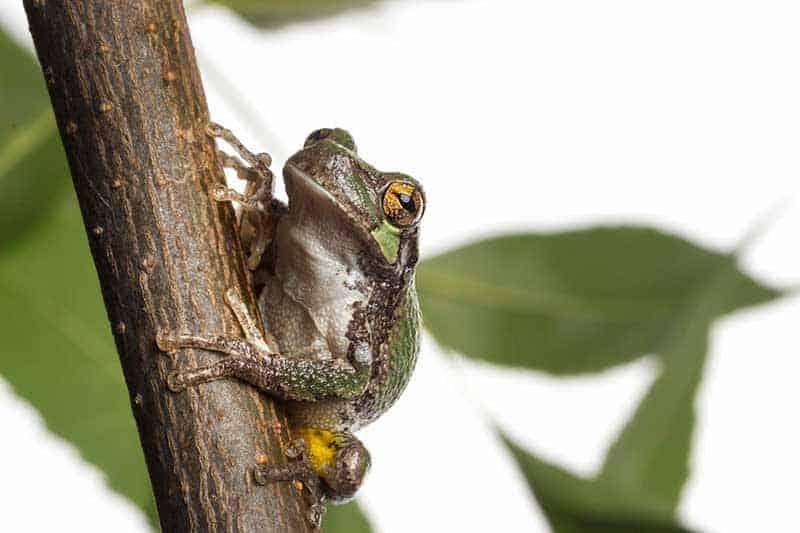You can find tree frogs on all continents except Antarctica, with at least 19 species in the United States. Their natural habitat is trees, forests, and near water bodies. Although well known for their tree-climbing abilities, not all tree frogs prefer hanging out on high branches above the ground. Nonetheless, they have a fascinating ability to jump and most species can change color depending on the temperature and their environment.
Oklahoma’s river drainage systems, bottomland hardwood forests, and bald cypress swamps offer great habitats for tree frogs to thrive. Read on to learn interesting facts about 10 tree frogs in Oklahoma and where you can find them.
10 tree frogs in Oklahoma
1. Green tree frog
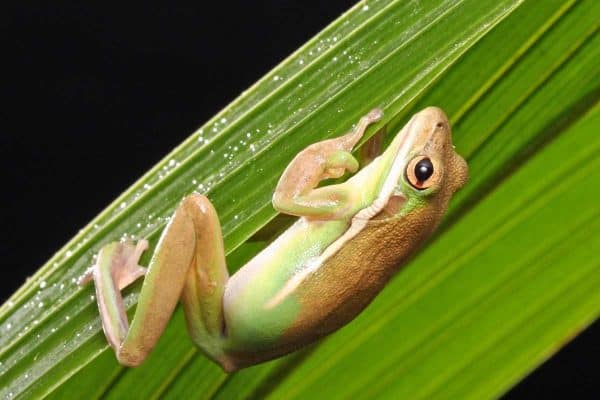
Scientific name: Hyla cinerea
The moderately large green tree frog ranges from 1.25 to 2.5 inches long. They have distinctive smooth and bright green skin but can be a pale yellowish-green during different times of the day. Their calls are also very loud, sounding similar to a cowbell or honking.
There are disjointed populations throughout Oaklahoma. You can find them in habitats along the Red River drainage in the southeastern counties. They are also associated with the Arkansas River along the eastern border and to the west.
2. Blanchard’s cricket frog
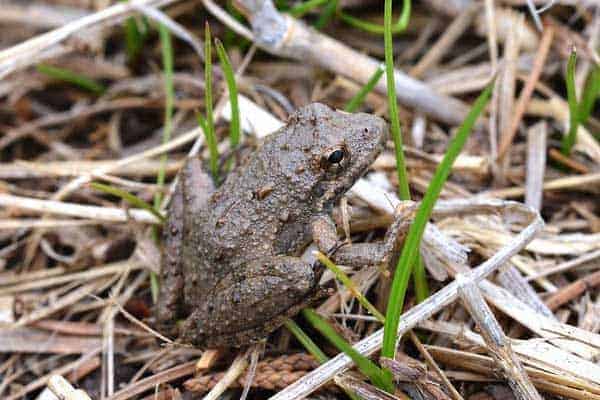
Scientific name: Acris blanchardi
Blanchard’s cricket frog are one of the smallest frogs in Oklahoma. They are also one of the most abundant, living in different habitats throughout the state. This includes large ponds, streams, creeks, swamps, and lake edges.
These frogs are grayish-brown with a dark gray triangle between the eyes. Some individuals also have a gray, dark red, or green stripe down the middle of their back. They make a call sounding like two marbles rubbing together and can commonly be heard both day and night during the summer months.
3. Western bird-voiced tree frog
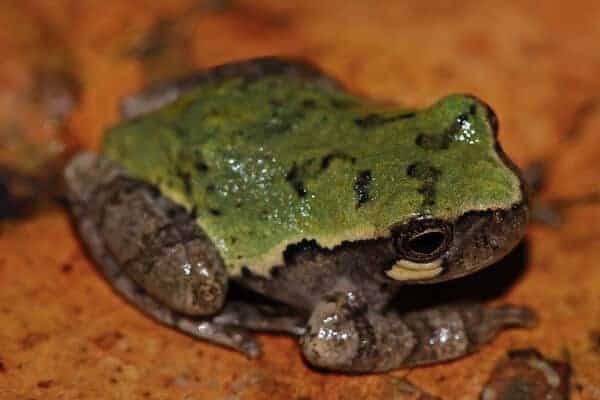
Scientific name: Hyla avivoca avivoca
Western bird-voiced tree frogs get their name from their bird-like, sharp whistling calls, especially during the breeding season. They grow around 2 inches long and are brown or pale gray, depending on their environment.
You can find them in the extreme southeastern counties of Oklahoma, including McCurtain County. They prefer wooded swamps near streams and rivers, especially in small trees and low bushes.
4. Gray tree frog

Scientific name: Hyla versicolor
Gray treefrogs are generally pale gray and light green with patterns resembling tree bark with lichen. They range from 1.5 to 2.5 inches long, with females slightly larger than males.
In Oklahoma, they are common in the eastern half of the state. However, some populations can be found in nearby southwestern counties. These frogs spend most of their time in trees and come down to fishless water bodies only to breed.
5. Cope’s gray tree frog
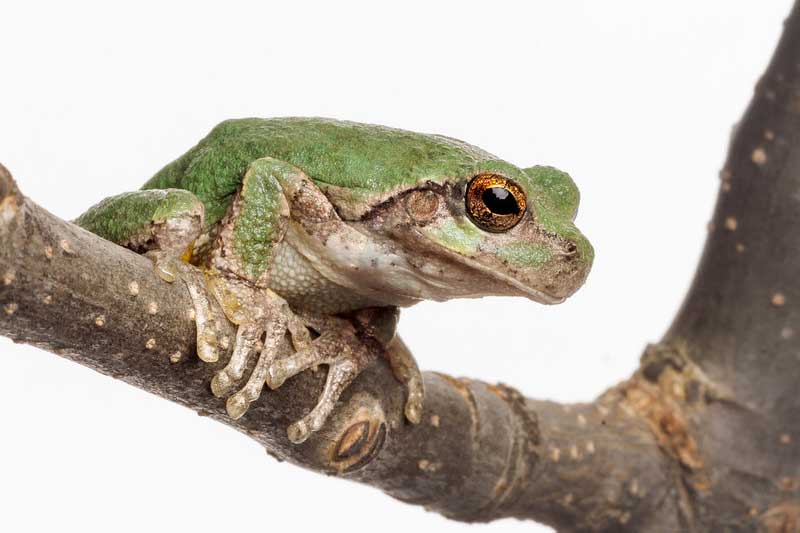
Scientific name: Hyla chrysoscelis
Cope’s gray tree frogs are smoother-skinned and smaller than the gray tree frog. Their backs tend to have a more solid lime green with a lichen-like pattern. Their musical trill is also more raspy and short.
You can find them across most of the eastern regions of Oklahoma. They prefer hiding in tree holes during the day and are active at night. The Cope’s gray tree frog and gray tree frog are known to breed in the same wetland habitats where their range overlaps.
6. Spring peeper
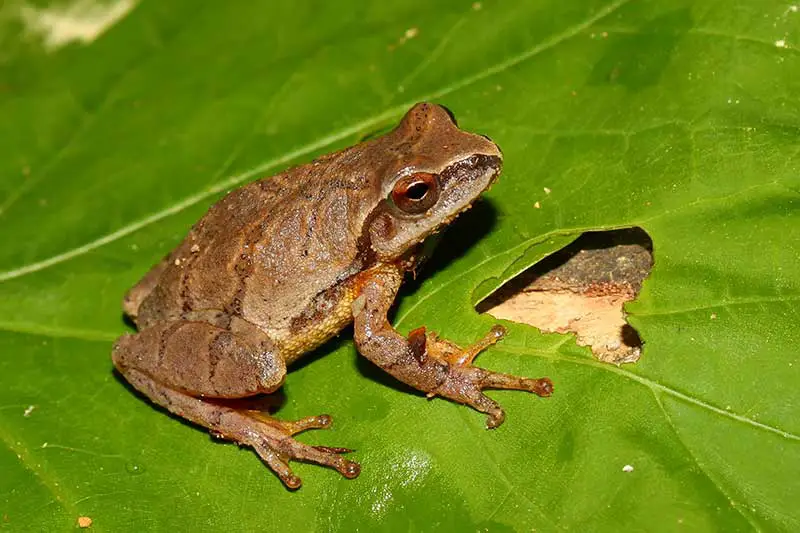
Scientific name: Pseudacris crucifer
Spring peepers are brownish-yellow or tan with a darker X pattern on their back. These small frogs are typically 0.75 to 1.5 inches long. Although they have large toe pads adapted for climbing trees, you can commonly see these frogs on the forest floor.
In Oklahoma, you can only find them in the extreme easternmost counties. You’re most likely to hear their distinctive peep calls near small water bodies during the early spring breeding season.
7. Squirrel tree frog

Scientific name: Hyla squirella
Squirrel tree frogs are nocturnal and get their name from their squirrel-like call. They grow around 1 to 1.5 inches long and their coloring ranges from green and yellowish-green to brown. Sometimes they also have a light stripe running from under their eye to their jaw.
Although more abundant in neighboring states, the squirrel tree frog does wander into Oklahoma in the southeasternmost counties. You can find them in gardens and on trees, vines, and shrubs.
8. Strecker’s chorus frog
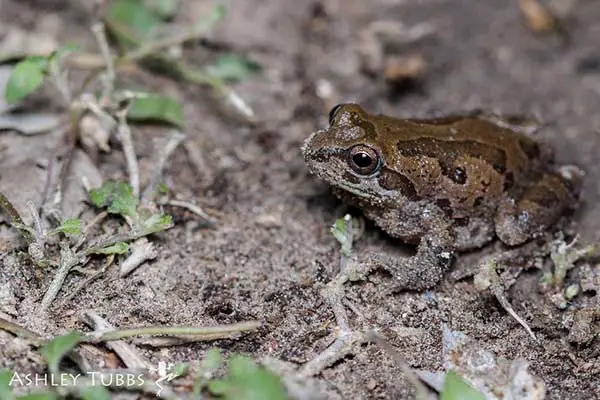
Scientific name: Pseudacris streckeri
Typically 1.5 to 2 inches long, the Strecker’s chorus frog is one of the largest chorus frog species. They have granular gray, grayish-brown, or greenish-brown skin with elongated blotches. Their call is a single bell-like note that’s repeated rapidly.
They live throughout Oklahoma in sandy areas of prairies, woodlands, and cultivated fields. Although tree frogs, this species doesn’t have large toepads and prefer burrowing in sand. You’ll only see them venturing above ground during the mating season.
9. Cajun chorus frog
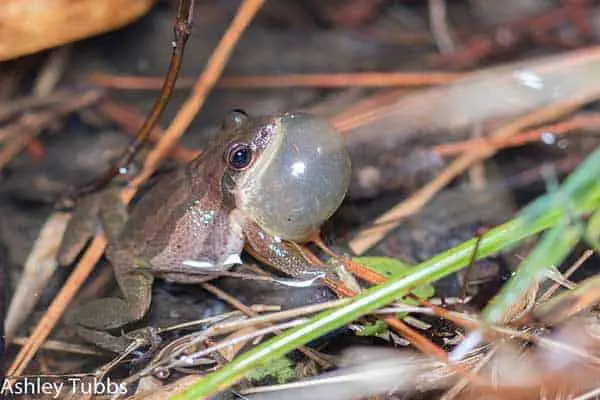
Scientific name: Pseudacris fouquettei
Cajun chorus frogs are small, brown, or brownish-gray frogs growing up to 1.25 inches long. Some individuals have stripes on their backs, while others have rows of spots. Instead of a single note call, these frogs produce a thrill at a rate of around 20 calls per minute.
You can find them in eastern Oklahoma counties, typically hanging out in ground-level vegetation. Their breeding sites are flooded fields, small ponds, swamps, marshes, and roadside ditches.
10. Spotted chorus frog
Scientific name: Pseudacris clarki
Typically gray or olive green with green mottling patterns, the spotted chorus frog grows up to 1.25 inches long. Their call is a fast series of clicks sounding like a scraping comb.
These frogs prefer prairies and grasslands, however, they also live in moist woods, swamps, and ponds. You can find them in the central half of Oklahoma. Although a tree frog, they are not as skilled with climbing as other species.
